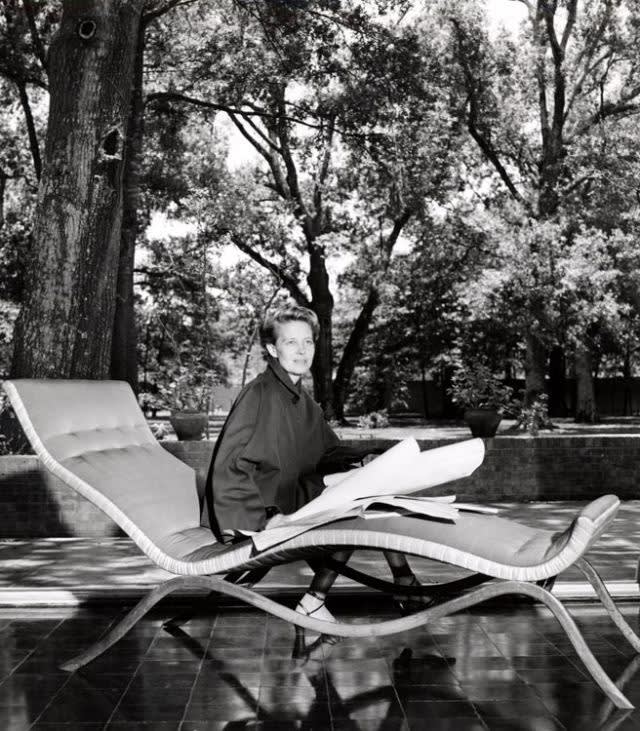
The Menil House
Living Room
Built in 1948, the de Menil House was not only the home of art patrons and social activists John and Dominique de Menil, but a cultural cross section between the modern architecture of Philip Johnson and the rich textiles of couturier Charles James.
Hailing from Europe, the de Menils immigrated to the United States in the early 1940s following the German invasion of France. After establishing a life for themselves in Houston, Texas, the family set out on a mission to build a striking new home that would jump start the city’s cultural relevance. Largely considered the ‘Medici family’ of modern art, the de Menils hired a young Philip Johnson to design their new home, a daring decision and the first of such private commissions the architect received.

Dominique and John de Menil
1967
Not only did the home serve as a cultural hybrid and break all pre-existing architectural and stylistic barriers, the space housed the de Menil family’s extensive art collection, which was noted for its Cubist, Surrealist, African sculpture, Mediterranean antiquities and contemporary works. The collection remained privately owned until 1997, when it was donated to the Menil Foundation after Dominique’s death.
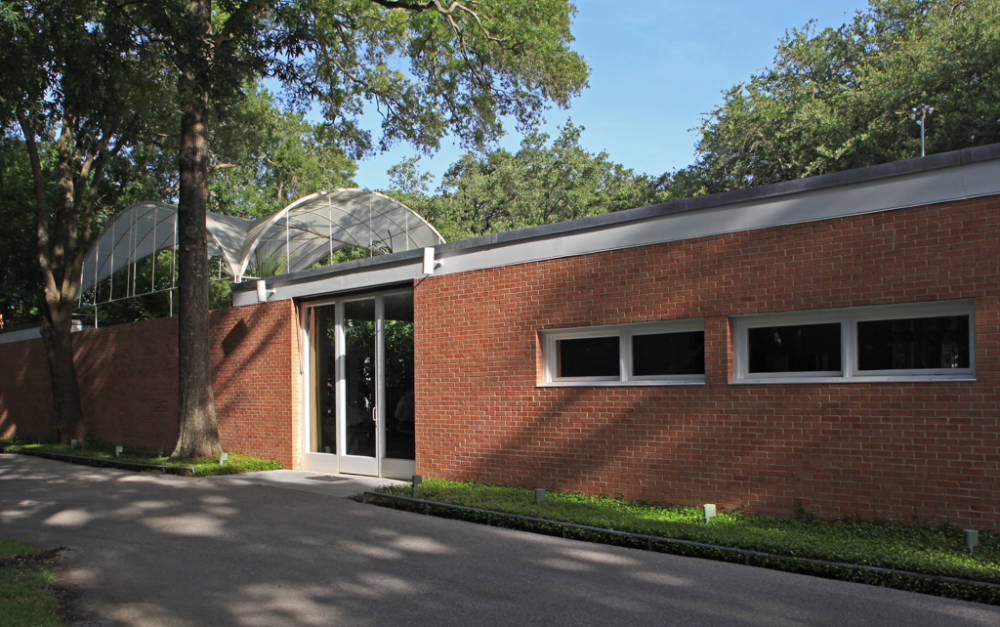
Philip Johnson
The Menil House, 1948
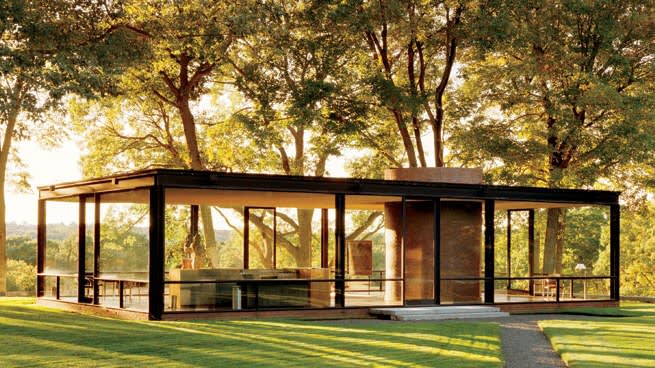
Philip Johnson
Glass House, 1949
Philip Johnson, a disciple of minimalist architect Mies van der Rohe, is best known for his works of Modern architecture, most famously including the Glass House in New Canaan, Connecticut. Yet in the 1940s, Texas knew little of modern architects and the home Johnson designed for the de Menil family - like most structures that challenge architectural convention - perplexed those who saw it.
Philip Johnson
de Menil House, 1948
Philip Johnson
de Menil House, 1948
Consisting of a single story with a flat roof and a large inset outdoor garden, the 5,600 square-foot structure includes all the trappings of a typical home, while the north, front end of the house, is composed of a 160-foot brick wall broken only by a three-panel glass entryway along with two double paned horizontal awning windows.
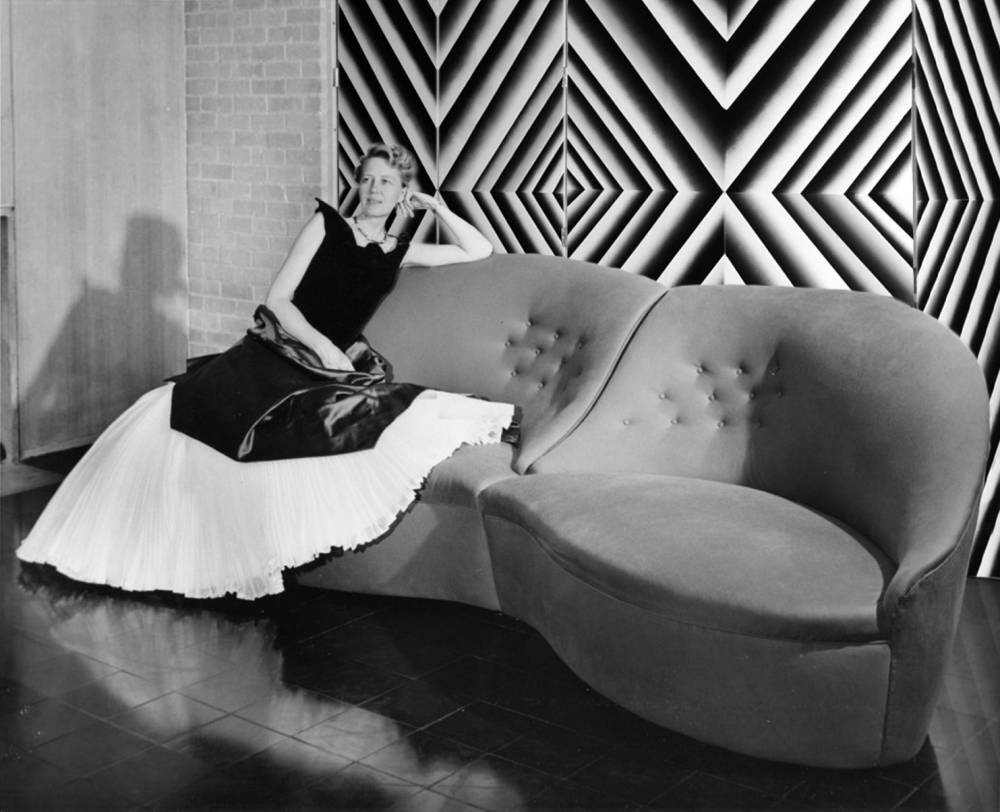
Dominique de Menil
Charles James Gown
While the de Menil home’s striking Philip Johnson-designed exterior attracts countless admirers, it isn’t until one enters the space that the genius of Johnson’s collaborator, Charles James, comes to life. After creating numerous sculptural gowns for Madam de Menil, James was given the responsibility of designing the family’s home’s interior. Just after, James arrived in Houston carrying a gigantic green vase with extravagant gold detailing that he purchased at the New York Armory Show. He chose a bouquet of white lilies from California in which to fill it and soon, this floral ‘sculpture’ was a main point of inspiration for the home’s interior design. In addition, James constructed a mock piano out of orange crates as another focal point, and curated objects composed of an eclectic mix of materials, textures, patterns, and styles.
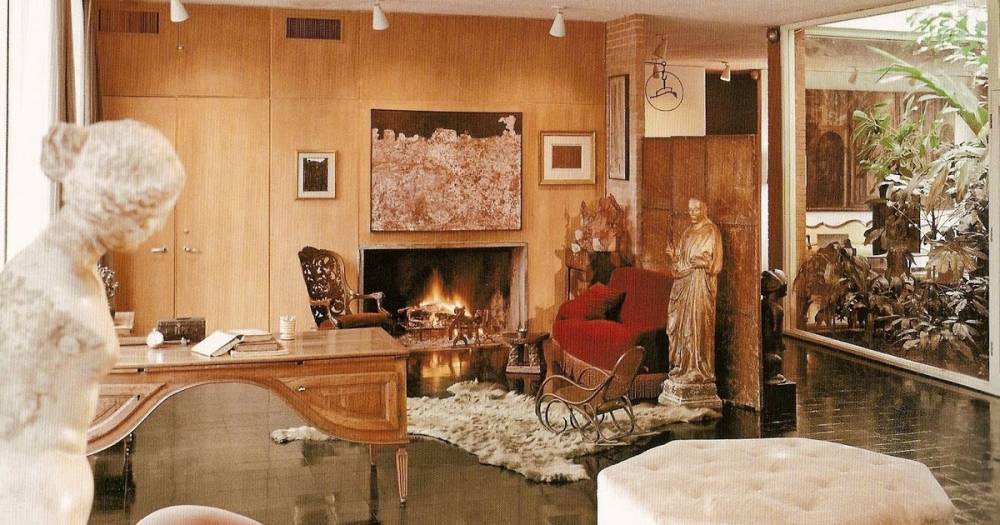
Charles James
Interior of de Menil House
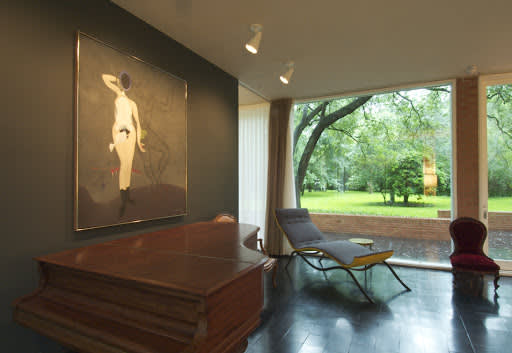
Charles James
Interior of de Menil House
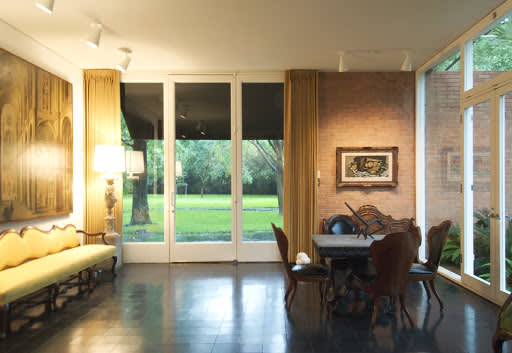
Charles James
Interior of de Menil House
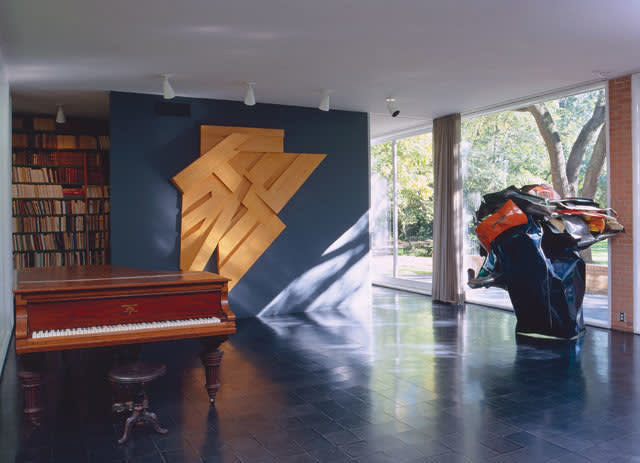
Charles James
Interior of de Menil House
James’ mission was to bring fluidity into the home’s interior, which is known for its abundance of rich fabrics and textures that play with lightness and airiness, as well as transparency and opaqueness. This lightness is also contrasted amongst heavier textures such as dark grey walls, dark floors, and a richness of pink and crimson velvets in the hallway. The space is filled with elements of surprise: you’d walk to an open cabinet, and while the exterior of the case could be grey, the inside would be a beaming apple green or pale yellow.
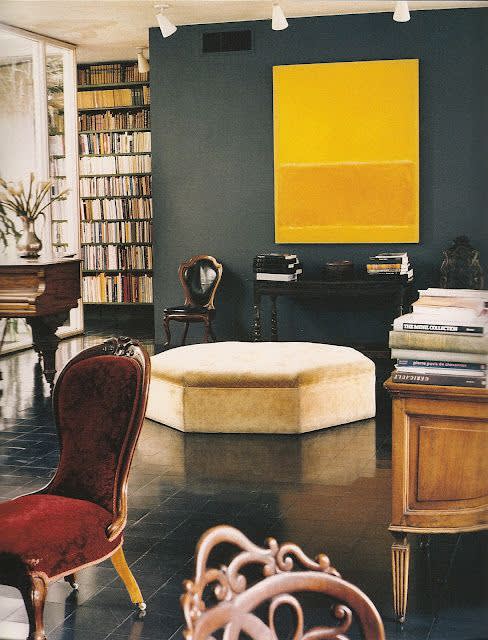
Charles James
Interior of de Menil House
Boasting an elegant mix of furniture, the formal living room includes an antique piano and 18th century Venetian sofa, as well as Belter furniture, an oversized octagonal ottoman, and a chartreuse, silk-covered chaise lounge. One of the more notable pieces in the home is the ‘Lips Sofa’, or ‘Butterfly Sofa’ completed by James in 1952. This object epitomizes the home’s fluid design and incorporation of modern art as a function of space, not just an object to hang on a wall.
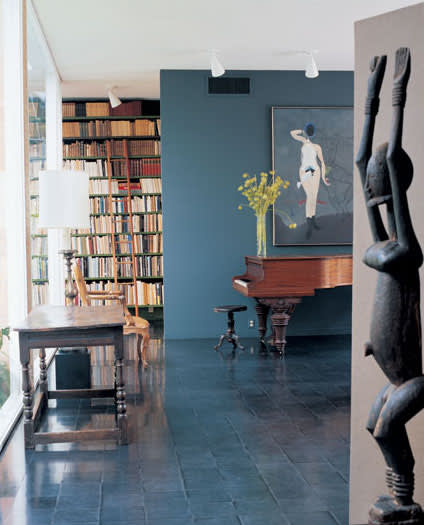
Charles James
Interior of de Menil House
The de Menil house is a hybrid environment, both in its construction and formal design elements. Today, the de Menil house is the only existing interior designed by Charles James and it remains carefully and valiantly conserved. This modernist structure demonstrates art’s importance both inside the home and to the outside world - Madame de Menil believed that art is “primary” and no less essential than the air we breathe. Sophisticated yet simple, a cornucopia of textures, materials, architectural elements, and objects that have both withstood the test of time and also emerged before their time, the de Menil house is a monumental and exemplary architectural landmark demonstrating the cross-section between design, functionality, art, and living.
